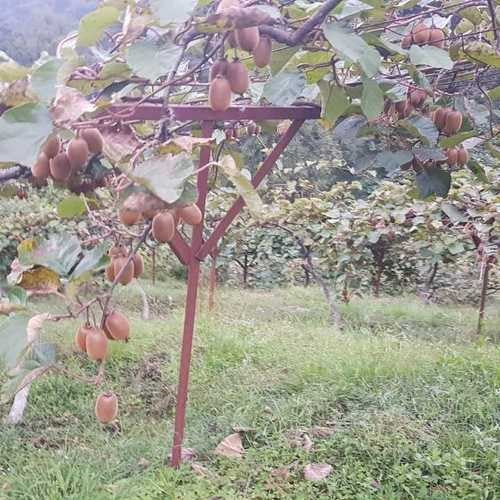
Arunachal Pradesh – The land of the Dawn-Lit Mountains
Among the eight Sister States of the Northeast, Arunachal Pradesh, ‘the land of the Dawn-Lit mountains,’ is the largest (83,473 sq km) and the most inaccessible. But it’s also the state that receives the country’s first sunrise every morning. More than anything else, it’s territory that’s still forbidden and foreboding - exotic, vibrant, enigmatic, and incomparably beautiful. Arunachal Pradesh, in the opinion of policymakers, has almost endless potential for development.
Rich in flora and fauna, it’s the natural habitat for a mind-boggling array of thousands of orchids. The state fruit of Arunachal Pradesh is the jackfruit while its state flower is the rare foxtail orchid! And then we have something that’s put Arunachal on the organic map - the wild Anteri, a relative of the domesticated kiwifruit. Verily, Arunachal Pradesh is a paradise waiting to be explored. It teems with treasures that could leave visitors in awe.

And that’s not all!
The ancient forest canopies shelter and feed hundreds of creatures, common and rare. They range from birds such as the green magpie, parrot-bill, finch, parakeet, and of course, the state bird, the hornbill, to reptiles such as pit viper, king cobra, and the deadly Ngarba viper that lives 9000 feet high on the cold mountains.
Nature has endowed Arunachal Pradesh with unparalleled, pristine beauty. Its lofty, snow-capped mountains, swift-flowing rivers and streams, and dense tropical and subtropical forests never fail to strike wonder in any visitor’s mind. The land is enchantingly gorgeous, a veritable heaven on earth, but for the unwary, the terrain of broken hills dropping off into steep and deep gorges can also be deadly and treacherous. A false step can prove deadly.
Arunachal Pradesh Tribes and Tales
As with all societies, each of Arunachal’s 26 major tribes and over 200 sub-tribes have their own fascinating and spell-binding tales to tell. These are the Doyings or folk tales that oldsters render as songs and these sessions could last for hours. They are sung in a style that enraptures listeners and teaches meaningful life lessons.
Some of these ancient tales speak about the Uyus or malignant spirits that haunt people most of the time and are the masters of their fates.
Other stories speak about how the communities live their lives, till their lands, hunt in their forests, and worship their gods, especially the Sun-Moon god Donyi Polo who is the supreme deity.
Some stories are fearsome, others are full of hope, but all stories have helped shape a tribe’s behaviour and way of life through the telling - actually, the singing - of tales of long ago when hunters hunted heads.
The tale I’m going to tell you today is one of hope. It’s a story of the upcountry Shimong Adi people who live in the valleys east of the great river Siang. It speaks of how they received the gift of cultivation and how their crops, vegetables, and fruits came to be so abundant and rich in variety as to leave no one hungry or sick to this day.
How the Shimongs of Upper Siang Got the Gift of Cultivation
Long ago, in Sitking Kedeng in the inner country of what we now know as the Siang district of Arunachal Pradesh, there lived a man named Jeri Tumbing and a woman, Jeret Genne, who fell deeply in love and eventually married each other. Soon they had a son and called him Sedi. Then a second son, Selo, was born shortly after.
During that period of time, the entire earth was barren; the plains were stark and bleak. Not even a blade of grass grew in the mountains and valleys.
As the years went by, however, the couple and their children transformed the land into a verdant country. Their excreta made the ground even more fertile for an incredible variety of crops and trees to thrive. Among the plants were the fruit-bearing tan tree and two useful shrubs, Dayut and Lalu, that began to grow and multiply along with a host of other fruit trees and edible roots.
Some plants were excellent not only for food and nutrition but also for the curing of many ailments. Other plants like Asconite, for example, make potent poison for their arrow tips, while another example, the Ripik creeper root, makes an effective poison to stun fish in the river.
How Death Enriched the Shimong Lands
Over time, the old couple Jeri Tumbing and Jeret Genne died. Later, Sedi and Selo, too, grew old and died. To dispose of their bodies, people cut them into pieces and scattered them to different places.
Sedi’s head went to the snow-god Jimu Tayang, the Spirit of the High Mountains of the North who resides on the crest of the 14,000 feet tall Eko Dumbing, the highest peak of Shimong country. It later turned into Liyak, the stone.
Sedi’s heart became flat land, his breastbones hills, and his lungs ngakdak, a kind of shrub. His backbone turned into a long bridge that joined the countries Tani, Man, with that of the Nimats - the Spirits.
During his lifetime Sedi was also very rich and had many possessions; in particular, one was an elegant fur coat that later adorned Kirti, the mountain rat. His hat, too, was made of excellent and invincible material. It became the Tarmour of Ipit, the pangolin.
The legs of Selo became steep hills. Part of his thick hair went to Nimat country, and it keeps growing season after season as Targa, the arrowroot. The other parts of his body became Tapi and Yoyi, two types of cane that people still use to make handicrafts.
͢Where the soil was fertile; people began to learn to farm. The inhabitants of the inner country of Monking Ayi and Bungor Apiang started clearing the shrubland to create fields for cultivation. But they ran into a problem: they could not get seeds to sow until an old couple, Lotum and Loying died.
Like the bodies of the others who died before them, those of Lotum and Loying were cut into pieces. Their teeth then became maize seeds. Their genitals gave them seeds of Ayak, the foxtail millet; their fingers gave them Mirung, the finger millet; and their hair became Angngiat, Job’s tears.
People then took the seeds and sowed them in the soil already made fertile by the faeces of Jeri Tumbing and Jeret Genne. Although they had seeds of all kinds of crops, which gave them varieties of food, they didn’t have that of the main one, paddy. So, they felled a giant tree called Siki Rene, and from its inner pulp, they drew out seeds of Mebang, the early paddy, and Jajum, the autumn highland paddy.
That’s how paddy became a popular staple. It grew well in the Siang valley, leaving the Shimongs with abundant grain for their rice and Apong or rice beer. It is believed that this is all a consequence of the blessings of Jeret Genne and Jeri Tumbing and their offspring, Sedi and Selo.
The two brothers’ luxuriant hair spread from far up north in the Upper Siang region to the country of the Apatanis in Lower Subansiri in the south and west. The hair became many kinds of wild but delicious fruit trees. Some became peach, apple, orange, wild kiwi trees, and a plethora of indigenous herbs.
So, that’s how the Shimongs say; they have so much diversity of plants on earth. These plants, experts now say, are unique and so great in nutritional, ethnobotanical, and economic value that they can become the country’s future cash crops.
When Wild Anteri Gave Way to Organic Kiwifruit
The legend of Sedi and Selo may be just a myth, but perhaps the Shimong ancestors told it to inspire people to accept the gifts of nature with awe, reverence, and gratitude because everything nature gives is good and valuable.
Anteri, the kiwifruit, for example, was merely a fruit that grew wild in Arunachal Pradesh’s jungles, particularly Lower Subansiri. Now it is becoming a game-changer for the state’s economy as demand for it is increasing. It has the potential to take on New Zealand as a major supplier.
Kiwifruit or Chinese gooseberry (Actinidia deliciosa Chev.) is known as China’s miracle fruit and New Zealand’s horticultural wonder. But it is a dioecious vine native to southwestern China’s mountain ranges that are contiguous with Northeast India’s mountain ranges. From China, it went to New Zealand in 1904, taken there by a visiting school Principal, Mary Isabel Fraser. The kiwifruit is now that country’s primary fruit product.

It took another 100 hundred years for Arunachal growers to discover that their kiwifruits taste as sweet and fragrant as New Zealand’s. That’s because the temperate mid-hill regions of Subansiri have the ideal altitude climate for the kiwifruit vines. Of course, not the wild Anteri but the domesticated and proven cultivars, especially the Hayward, Allison, Monty, and Bruno varieties.
Can Arunachal Kiwifruit Thrive?
The blessings of Jeri Tumbing and Jeret Genne continue to manifest in Arunachal Pradesh in the form of fertile ground and ambient climate. There’s potential also in value addition, for example, in the form of kiwi wine that would boost demand.

A significant push came when the government gave the eagerly-awaited organic certification in October 2020. This should lead to a surge in demand provided pre- and post-harvest practices, and logistics supply chain mechanisms are refined and streamlined. On top of that, there’s also a need to train producers to develop winning entrepreneurial behaviour.
Yes, kiwifruit can thrive well in the North-eastern states. Except for Assam and Tripura, all the other states, including Meghalaya, are excellently located for kiwifruit cultivation.
It seems the brown, hairy-skinned fruit with a juicy, sweet pulp inside has found itself a suitable atmosphere to grow in. It’s easy to grow and tend, is less prone to diseases and pests, and fruits at a time (October/November) when other fruits are becoming scarce.

The kiwifruit is high in nutritional and medicinal value with Vitamin C and E content that’s twice that of tomato, guava, and avocado. It’s also high in dietary fibre, antioxidants, and minerals such as potassium, phosphorus, and calcium, which gives many health benefits, including supporting heart and digestive health.
Production of kiwi in Arunachal Pradesh today
As a result of it’s booming popularity, the kiwifruit has seen drastic changes in production as compared to 20 years ago when no one knew how highly it was favoured all over the world.
Although Arunachal Pradesh is far from overtaking New Zealand’s rank for the highest kiwi producing country in the world, the drastic changes are still drastic, at least in India. According to a report by the National Horticulture Board, Arunachal Pradesh accounts for more than 50% of the total production of kiwi in India.
With the organic certification in the bags as well, this number could very well double as early as 2023, as stated by Er. Tage Taki, Minister of Agriculture and Horticulture, Arunachal Pradesh.
The suitable terrain and agro-climatic conditions of Arunchal Pradesh serves to be the driving force for the push for extensive production of this special fruit.
Sedi And Selo Live Forever
Perhaps the ancestors of the Shimongs of the Upper Siang had a lesson in mind for all peoples when they sang the Sedi and Selo ballads. It’s evident that the body parts they spoke about continue to live in, grow in, feed, and enrich not only Arunachal Pradesh’s Siang and Subansiri districts but entire North-eastern India!
Maybe we should keep the legend alive by holding the gifts of Nature with the respect they deserve. If we do that, not only the kiwifruit but many other unique fruits of this soil will make the north-east India prosper.


